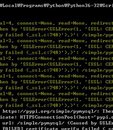Department
programming
programming
John Doe
Jan. 16, 2023, 8:06 a.m.
John Doe
Jan. 14, 2023, 2:24 a.m.
John Doe
Jan. 12, 2023, 9:59 p.m.
John Doe
Jan. 12, 2023, 9:08 a.m.
John Doe
Jan. 12, 2023, 8:19 a.m.
John Doe
Jan. 12, 2023, 7:27 a.m.
John Doe
Jan. 12, 2023, 3:28 a.m.
John Doe
Jan. 12, 2023, 2:56 a.m.
John Doe
Jan. 12, 2023, 2:44 a.m.
John Doe
Jan. 12, 2023, 2:03 a.m.
John Doe
Jan. 12, 2023, 1:36 a.m.
John Doe
Jan. 12, 2023, 1:30 a.m.
